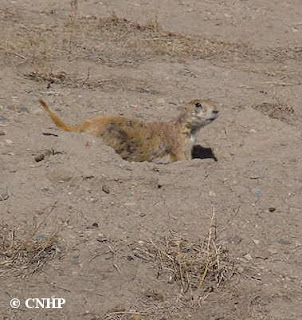This site was visited in 2002 as part of the Mesa County Wetland Inventory. In western Colorado's Black Ridge Canyons Wilderness, this scenic redrock canyon contains an enormous cavern cut by a meander of a small stream which drains to the Colorado River. The canyon is rimmed with red Entrada sandstone, and its steep sides are formed in the Kayenta and Wingate formations.
Above the canyon, the mesas supports an excellent example of the Utah juniper/saline wildrye (Juniperus osteosperma/Leymus salinus) community, as well as characteristic stands of black sage (Artemisia novum), Indian ricegrass (Achnatherum hymenoides) and needle and thread grass (Hesperostipa sp.). Dry slopes on the side of the canyon have scattered Utah juniper (Juniperus osteosperma), Fremont barberry (Mahonia fremontii), and cliffrose (Cowania mexicana).
Sandstone walls oozing moisture that supports rare species
The canyon bottom is ungrazed, and the difficulty of access to the upper reaches has probably protected it from human impacts. In the narrow riparian area at the bottom of the canyon, the stream banks are covered by dense growth of scouring rushes (Hippochaete sp.), with giant helleborine orchids (Epipactis gigantea) and scattered box elders (Acer negundo) growing among them. Not far from the cavern is a grotto with seeping walls that supports a good example of the globally imperiled hanging garden community (Aquilegia micrantha-Mimulus eastwoodiae), characterized by the yellow Mancos columbine. The state imperiled canyon tree frog (Hyla arenicolor) also occurs here, close to the northern limit of its distribution.
The Mancos columbine (Aquilegia micrantha)
A canyon treefrog (Hyla arenicolor)































